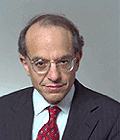
Stock PricesAbout the Author |

Over time most firms pay rising dividends. Rising dividends occur for two reasons. First, firms rarely pay out all their earnings as dividends, so that the difference, called retained earnings, is available to the firm to invest. This, in turn, often produces greater future earnings and hence higher prospective dividends. Second, the earnings of a firm will rise as the price of its output rises with inflation. Firms may also increase their dividends due to growth in the demand for their products and increased efficiencies of operation. These are the firms, of course, that investment advisers seek out when recommending stocks.
Cash payments to shareholders also result from the sale of some of the assets of the firm, outright liquidation, or a buyout. A firm may sell some of its operations, using the revenues from the sale to provide a lump-sum distribution to stockholders. When a firm sells all its operations and assets, this total liquidation results in a cash distribution after obligations to creditors are satisfied. Finally, if another firm or individual purchases the firm, existing shareholders may be eligible to receive cash payments or securities that can be sold in the open market for cash.
Some firms do not pay dividends but use their earnings to purchase their stock on the open market. Since this reduces the number of shares outstanding, the remaining shareholders each own a greater percentage interest in the assets of the firm. Therefore, the price of a stock can rise even if the firm does not pay a dividend and never intends to do so. If and when the assets of these firms are sold or liquidated, a cash distribution will be made and shareholders will realize a capital gain. Some firms pursue this policy to enable their shareholders to realize lower taxes, since taxes on capital gains are deferred and often paid at a lower rate.
The total return from owning stock arises from two sources: dividends and other cash distributions, and capital gains. A total return index for stocks can be computed by assuming that all cash distributions, and capital gains are continually reinvested in the stock. This index would be akin to the accumulation of a pension plan that reinvested all dividends and capital gains in the stock (or group of stocks), or to the reinvestment of all distributions back into a mutual fund.
Over time, the total return on stocks has exceeded that of any other class of asset. This is shown in chart chart 1, which compares the total returns to stocks, long- and short-term government bonds, gold, and commodities (measured by the consumer price index). One dollar invested in stocks in 1802 would have grown to $1,250,000 in 1991, in bonds to $6,920, in Treasury bills to $2,830, and in gold to $14.20. The consumer price index has risen by a factor of 10.4, almost all of it after World War II. One dollar invested in 1802 would have grown, in inflation-adjusted dollars, to $109,000 in stocks, $605 in bonds, $248 in Treasury bills, and $1.24 in gold.

Chart 1. Total Returns Cumulated Wealth from $1 Invested in 1802
Enlarge in new window
The average compound rate of return on stocks from 1802 through 1991 was 7.7 percent per year: 5.8 percent from 1802 to 1870, 7.2 percent from 1871 to 1925, and 10.0 percent from 1926 to 1991. The increase in the rate of return of stocks over time has fully compensated the equity holder for the increased inflation that has occurred since World War II.
Stock prices are more variable than prices of most other assets, which means that the returns can change dramatically from year to year. In the postwar period annual stock returns have averaged about 12 percent, with a standard deviation of about 15 percent. This means that in about two-thirds of the years, stock returns should fall between -3 percent and +27 percent. In contrast, short-term government bonds have an annual return of 4.9 percent and a standard deviation of only 3 percent, so that in two-thirds of the years the return will be between 2 percent and 8 percent. Although on an annual basis stock returns are often lower than returns on fixed-income assets, the higher average return on stocks virtually guarantees that stocks will outperform bonds in the long run. In every thirty-year period from 1872 to the present, and in every ten-year period from 1929 to the present, stocks have outperformed both long- and short-term government bonds.
The major determinants of stock prices are corporate earnings and interest rates. The stock market almost always falls before recessions. In fact, out of the forty-one recessions from 1802 through 1990, thirty-eight of them, or 93 percent, have been preceded or accompanied by declines of 8 percent or more in the stock returns index (the only exceptions were the 1829-30, 1945, and 1953 recessions). In the postwar period the peak of the stock market preceded the peak of the business cycle by between six and seven months.
The stock market is also prone to giving false alarms about oncoming recessions, and these false alarms appear to have increased in the postwar period. Excluding the war years, when declining stock markets have coincided with expanding war economies, there have been twelve episodes since 1802 when the cumulative returns index has fallen by 8 percent or more, but this has not been followed by a recession within the next twelve months. This occurred five times in the nineteenth century and seven times in the twentieth century. All those in this century have occurred since World War II (1946, 1956, 1962, 1966, 1978, 1984, and 1987).
The largest one-day drop in stock market history occurred on Monday, October 19, 1987, when the Dow-Jones industrial average fell 508 points, or 22.6 percent. No significant news event explains the decline, although rising interest rates and a falling dollar began to weigh on a market that had become tremendously overvalued after a five-year bull run. Once the decline gained momentum, selling begat more selling and a panic developed. Since a recession did not follow and stock prices subsequently recovered to new highs, many pointed to Black Monday as a confirmation of the "irrationality" of the stock market. Stock prices, however, are determined by expectations of the future, which must, by definition, be unknown. Shifts in sentiment and psychology can sometimes cause substantial changes in the valuation of the market. Despite false alarms the stock market is still considered an important indicator of future business conditions.
Jeremy J. Siegel is the Russell E. Palmer Professor of Finance at the University of Pennsylvania's Wharton School.
Malkiel, Burton. A Random Walk Down Wall Street, 5th ed. 1990.
Siegel, Jeremy J. Stocks for the Long-Run. 1993.
Siegel, Jeremy J. "The Equity Premium: Stock and Bond Returns Since 1802." Financial Analysts Journal 48, no. 1 (January/February 1992): 28-38.
Teweles, Richard, and Edward Bradley. The Stock Market, 5th ed. 1987.

